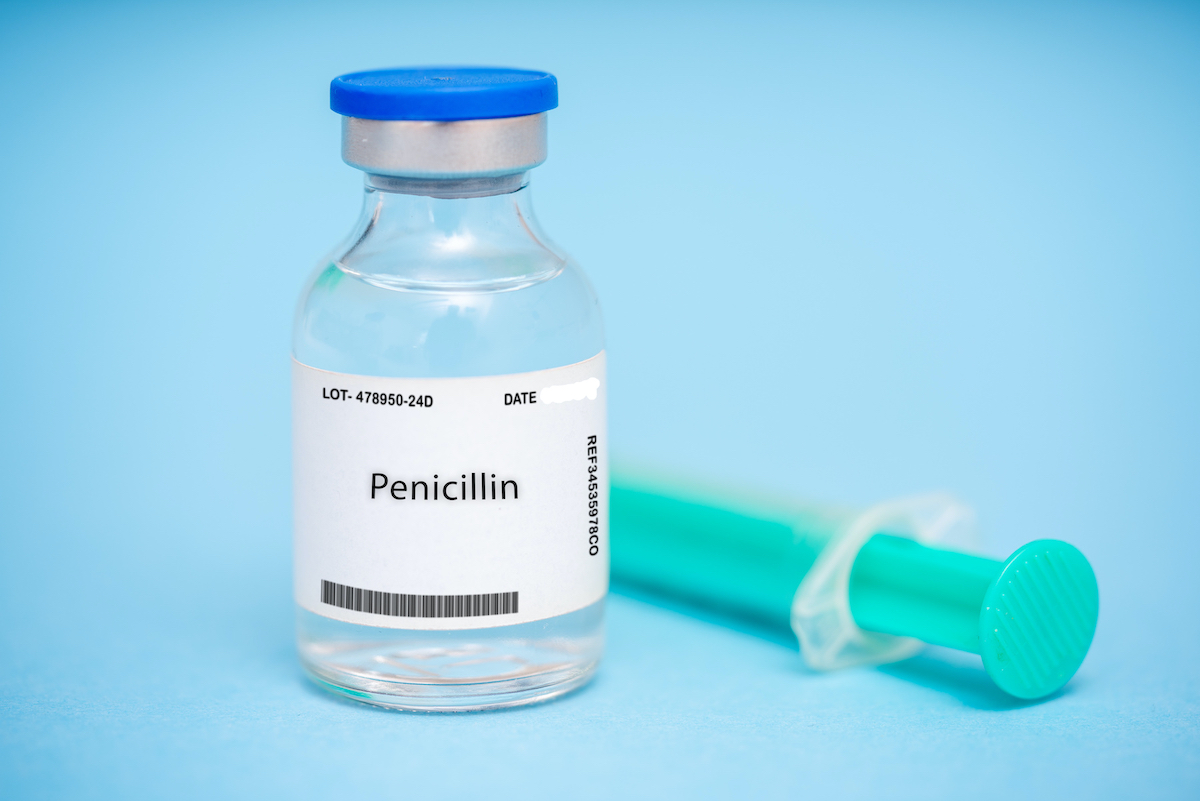
Penicillin belongs to a group of antibiotics used by healthcare professionals to combat a wide array of bacterial infections, including strep throat, ear infections and pneumonia. Penicillin, one of the most widely prescribed antibiotics, is also one of the most frequently reported medication allergies.
The Centers for Disease Control and Prevention says 10% of people living in the U.S. report having a penicillin allergy. However, less than 1% are truly allergic. If your healthcare team can’t prescribe the preferred antibiotic for your bacterial infection due to a listed allergy, it can pose additional risks to your health.
Testing for penicillin allergy
Talk with your healthcare team to find out if you need to be tested for a penicillin allergy. Penicillin skin testing and oral challenge doses are reliable methods for evaluating a penicillin allergy.
A lot of people think they are allergic to penicillin. Are you one of them? But did you know that most people who think they are allergic are not? In fact, only one out of ten people who think they have a penicillin allergy really do.
There are quite a few reasons why a penicillin allergy can be mistaken. For many, this happens because there’s not enough detailed information on the type of reaction someone had in their childhood. Their symptoms such as headache, diarrhea, nausea, or abdominal pain could’ve been known antibiotic side effects or the result of a virus they had at the time. Also, non-hive skin rashes they may have experienced are not considered allergic reactions. Some people believe they have a penicillin allergy because it runs in families, which is untrue. Others who have not used penicillin in years can simply outgrow their allergy.
What does this mean? You can get tested for a penicillin allergy. Determining if you have an allergy to penicillin is helpful for your future health care. If it turns out you are not allergic, your health care team has more options available when you have a bacterial infection that needs to be treated.
Penicillin and other related antibiotics are the preferred treatment for certain bacterial infections. Penicillin costs less than other antibiotics. It is usually well tolerated with fewer side effects. Plus being able to take a medicine like penicillin instead of other broad coverage antibiotics helps with something called antibiotic resistance.
Why does this matter? Antibiotic resistance means bacteria causing an infection no longer respond to antibiotic treatment. This can happen when antibiotics are used too much or used when they’re not needed. Antibiotic resistance reduces the choices for safe and effective antibiotics to treat people. With penicillin as a choice, doctors can offer the right medicine at the right time to treat an infection. And that helps all of us.
Penicillin is a recommended treatment for many bacterial infections because it is highly effective, cost-efficient, and helps reduce the development of antibiotic resistant bacteria. If you believe you’ve had an allergic reaction to penicillin in the past, it’s important to get tested to learn if it’s safe for you to use in the future. Penicillin allergy testing is done in a medically supervised environment and can involve two to three parts. Depending on the number of tests needed, it can take from one to three hours. The risk of having an allergic reaction during testing is less than 1%.
There are several ways to test for a penicillin allergy. You’ll start by talking to a member of your health care team about your penicillin allergy. They will ask questions about when you had your allergy, what happened to you, and how long it has been since you had the reaction. This helps determine the type of testing you may need. If you’ve never had a serious reaction, it may be recommended that you take a small dose of penicillin or medicine closely related to penicillin under medical supervision. For others, a skin prick test is recommended first. A nurse or allergist pricks the skin with a small needle containing a tiny amount of penicillin. If the skin reacts with a red, itchy bump, then you are probably allergic. If the skin does not react, you are probably not allergic. In certain situations, your health care team may continue the testing to include injecting a small amount of penicillin under the skin. Once again, swelling and itching will show a penicillin allergy. Sometimes after completing these tests with no allergic reaction, you may be asked to swallow a small dose of penicillin or medicine closely related to penicillin to confirm your negative test results. Throughout penicillin allergy testing, you are watched closely for any reactions. If there are no signs of an allergy, you are not allergic to penicillin. The penicillin allergy can then be removed from your medical record.
Penicillin is the preferred and cost-effective treatment for many bacterial infections. Of the 10% of people who think they have a penicillin allergy, less than 1% really do. I highly recommend getting a penicillin allergy test for your future healthcare needs.
Now that you know how beneficial penicillin can be, contact your health care team to find out about getting a penicillin allergy test.
Reconsidering penicillin allergies
Penicillin is one of the most prescribed antibiotics for bacterial infections.
And the best treatments for things like strep throat, ear infections, pneumonia are penicillin or another antibiotic in that same family.
If your medical chart indicates a penicillin allergy, your healthcare team needs to look for other options.
These other antibiotics are often not as effective as a penicillin. So that means you might not get better. And they can be harder on your system.
Symptoms of a true antibiotic allergy are things like hives, rash, usually a very itchy kind of raised rash can develop.
It’s estimated 50% of people will outgrow the allergy within five years.
Sources: Adapted from an article by Deb Balzer, January 18, 2024. https://newsnetwork.mayoclinic.org/discussion/mayo-clinic-minute-
penicillin-allergy-maybe-not/;












